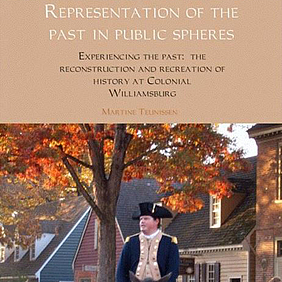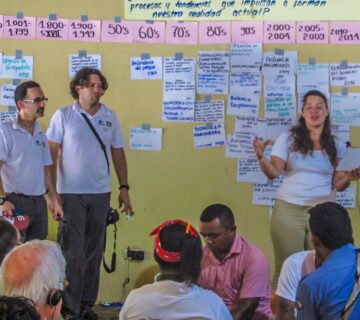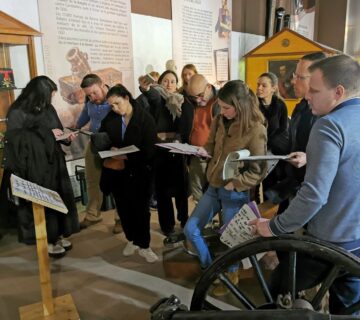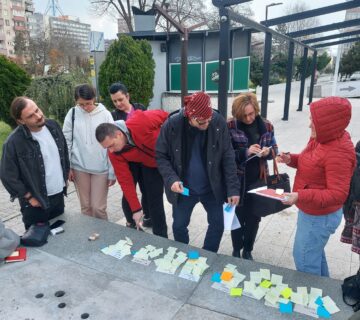Williamsburg, Virginia (USA) has been helping visitors understand the events of the past for several decades. Theatrical programming is one of the latest styles to be offered, but how effective are these programmes?
Martine Teunissen was able to see, first hand, one of the newest interpretive programs to be offered at Historic Williamsburg in Virginia (USA) – the ‘Revolutionary City’. Williamsburg served as the original capital of the United States and was very involved in the discussions related to the split with England. The town looks, in many ways, very similar to the way it did prior to, and during, the American Revolution. While many of the buildings in Historic Williamsburg are part of the living history museum, others remain in private ownership. This mix of public and private ownership is but one challenge faced by interpreters attempting to share stories of the past.
Over the last few decades, Williamsburg, and other living history facilities, have introduced a number of new programmes. From the start, Williamsburg utilised costumed individuals to help visitors feel part of the past. Interpreters have been trained to interact with visitors on a one-to-one discussion basis. Williamsburg began seeking new ways to interact with visitors and to expand the interpretive presence at the site.
Combining the impact of live theatre and the proven effectiveness of one-to-one interpretation, Williamsburg expanded into small group interactions on the streets. Visitors are made to feel like members of the community, discussing the events of the day. The discussions are guided by the interpreters and go far to help visitors step back to the late 1700s.
Individual interpreters have also engaged visitors to determine how effective their presentations have been in bringing the past to life. I have worked with schools and museums for many years, presenting one-man shows, to a variety of audiences. Over the years I have been able to determine that theatrical interpretation is a very effective tool in an interpreter’s toolkit, but only when the information to be presented guides the interpreter in building an effective persona.
Williamsburg has built a reputation for its effective training of interpretive staff members. Before new members of the community are set loose on the streets, they participate in a great deal of research and observation. Once they feel comfortable with the material, the town and in front of the visitors, they begin their journey to the past.
The Revolutionary City is one of the latest interpretive opportunities offered at Williamsburg. It involves a number of interpreters who take different sides of "current issues" that affected Colonial Williamsburg. The interpreters utilise actual discussions, writings, and printed materials from the day to help develop the narrative that is offered. As the interpreters begin their vociferous discussion on the streets, visitors gather around, much as the townspeople of the past most likely did.
The popularity of Williamsburg’s presentation is due, in large part, to the training of the staff and the research that has been accomplished behind the scenes. This book details how the Revolutionary City programme was developed and what goals the museum hoped to reach through these presentations. Living history professionals will find this book helpful in the way it details how it was developed and the evaluation procedure that was used to help determine the effectiveness of large-scale theatrical interpretation presentations. The "street theatre" programmes offered at Williamsburg and other living history museums have been shown to be popular with guests. This book answers the question "Are these programs effective in changing visitor’s attitudes and understanding of the past?"
The physical book is available here:
http://www.beleefhetverleden.nl/product/boek-representation-of-the-past-in-public-spheres/
A PDF version is available to download here:
http://www.beleefhetverleden.nl/product/pdf-format-book-representation-of-the-past-in-public-spheres/
Douglas Weeks is the owner of Yesterday’s Gentlemen, a firm he began nearly two decades ago to help bring the past to life. He has presented a wide range of living history programs to groups and understands the potential effectiveness of this interpretive tool. He can be contacted at: doug@yesterdaysgentlemen.com
To cite this article:
Douglas Weeks (2017) ‘Book Review of ‘Representations of the Past in Public Spheres’ by Martine Teunissen’. In Interpret Europe Newsletter 1-2017, 22
Available online:
https://www.interpret-europe.net/fileadmin/Documents/publications/Newsletters/ie-newsletter_2017-1_spring.pdf




